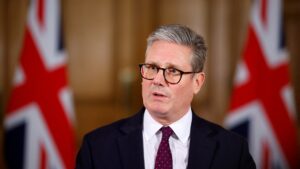
In an interview Wednesday, Canadian Prime Minister Justin Trudeau said his country is committed to keeping the border closed until the United States gets control of COVID-19.
“The U.S. is not in a place where we would feel comfortable reopening those borders,” he told the hosts of “Smart Start,” which airs on Canada’s Global Television Network. “We will continue to make sure that Canadian safety is top of mind when we move forward. We see the cases in the United States and elsewhere around the world, and we need to continue to keep these border controls in place.”
In the past week, 13 states – including Alaska, Minnesota, Montana and North Dakota, which border Canada – topped their own records for new cases in a seven-day period. North Dakota, which shares a 310-mile-long border with its northern neighbor, reports cases at a speed one-third faster on a per capita basis than any U.S. state experienced in the worst of the spring or summer surges.
An otherwise healthy 25-year-old Nevada man became the first American to contract COVID-19 twice, casting further doubt on the viability of the herd immunity strategy espoused by the White House. In his case, the second infection prompted stronger symptoms than the first. There have been more than 20 confirmed cases of reinfection worldwide.
Although its COVID-19 infection rate is far lower than that of the USA, Canada has not been immune from a second wave of cases.
According to the Canadian government, the country reported nearly 31,000 new cases and 372 deaths in the past two weeks. Cumulatively, it has had more than 193,000 cases and almost 9,750 deaths. The provinces of Quebec, which reported more than 7,000 new cases in the past week, and Ontario, which counted nearly 5,500, are in the worst shape, according to New York Times data.
“I think this second wave is really exhausting,” Trudeau acknowledged. “It’s frustrating for everyone to have to keep going through this. We showed that we can pull together and get through this, as we did in the spring. Then people got used to the slow burn in the summer. Now that cases are spiking again – with the approach of winter, with the approach of flu season – we need to get things back under control.”
The upside, he said, is that “we know how to do it in a more targeted way now than in the spring. We know what kinds of businesses are more likely to spread COVID-19, what kinds of activities.”
That approach, he said, “allows us to do the right things medically and keep us safe while not totally ruining people’s economies.”
Trudeau warned Canadian snowbirds to resist the urge to travel south in search of warmer climes.
“I know there’s a lot of people worried about what’s happening south of the border in Florida, Arizona, California and other places where the virus is not under control or less under control than we are here,” he said. “The challenges around the health care system being overloaded down there and access to health insurance – making sure you have coverage in case something does happen – are a lot more difficult.”
He said a travel advisory is as far as the government is willing to go.
“Ultimately, if someone chooses to travel, we’re not going to keep them imprisoned in Canada. There’s freedom of movement in this country,” he said. “Still, people have to recognize they’re putting themselves at risk, putting their loved ones at risk. And they may not have the right kind of health insurance or repatriation flights that we did early on if they choose to leave the country.”






